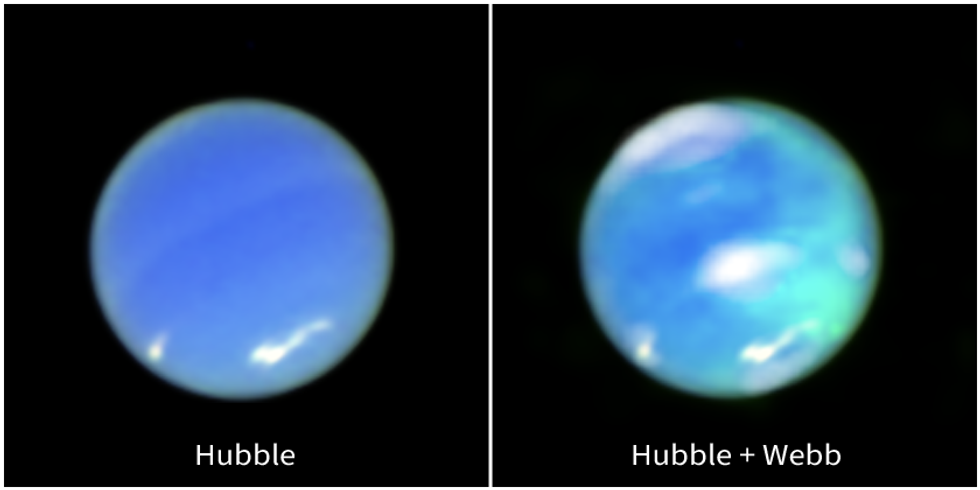Science & Tech
Gregory Robinson
Mar 28, 2025
Why Have Neptune’s Clouds Started To Disappear?
ZMG - Amaze Lab / VideoElephant
Look at that glow!
NASA’s powerful James Webb Space Telescope has captured “bright auroral activity” on Neptune – and the images are captivating.
This marks the first time the long-sought auroras have been spotted on Neptune. Auroras happen when energetic particles that usually originate from the Sun become trapped in the magnetic field of a planet before striking the upper atmosphere.
The signature glow happens as a result of the energy released during these collisions with the upper atmosphere.
Astronomers had spotted alluring signs of auroral activity on the planet, which is the eighth and farthest from the Sun.
Despite successful detections of auroras on Jupiter, Saturn, and Uranus, astronomers have long struggled to image and confirm the auroras on Neptune. It remained the missing link in the puzzle of detecting auroras on the giant planets of our solar system.
Turns out, actually imaging the auroral activity on Neptune was only possible with Webb’s near-infrared sensitivity,” Henrik Melin of Northumbria University, said. Melin is the study’s lead author and conducted the research while at the University of Leicester.
“It was so stunning to not just see the auroras, but the detail and clarity of the signature really shocked me.”

In June 2023, data was collected using Webb’s Near-Infrared Spectrograph. Alongside an image of Neptune, astronomers acquired a spectrum to study the planet’s upper atmosphere (known as the ionosphere), focusing on its composition and temperature.
They unearthed an incredible discovery — for the first time, the experts observed a strong emission line which signifies the presence of the molecule trihydrogen which forms during auroras. The images from Webb of Neptune show the glowing auroras as cyan splotches.
Images of Neptune captured by Hubble’s Space Telescope and the same image combined with data from NASA’s James Webb Space Telescope provide an unprecedented view of the planet and its auroras.
Neptune’s auroral activity is very different to that of Earth, Jupiter or Saturn. Instead of being focused on the planet’s northern and southern poles, the auroras of Neptune strike at the planet’s mid-section - which would be where South America is here on Earth.
Astronomers say the detection of Neptune’s auroras will help uncover more about how its magnetic field interacts with particles that “steam out from the Sun to the distant reaches of our solar system,” per a NASA press release.
“As we look ahead and dream of future missions to Uranus and Neptune, we now know how important it will be to have instruments tuned to the wavelengths of infrared light to continue to study the auroras,” said Leigh Fletcher of Leicester University, co-author on the paper. “This observatory has finally opened the window onto this last, previously hidden ionosphere of the giant planets.”
The results have been published in the journal Nature Astronomy.
You should also read:
- Scientists discover baffling truth behind 'impossible' monster galaxies
- Odd things are happening on Neptune and no-one understands them
How to join the indy100's free WhatsApp channel
Sign up for our free Indy100 weekly newsletterHave your say in our news democracy. Click the upvote icon at the top of the page to help raise this article through the indy100 rankings.
Top 100
The Conversation (0)














